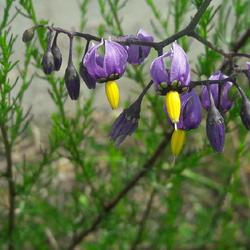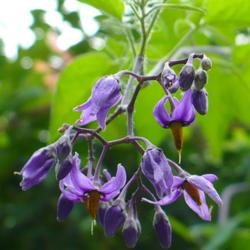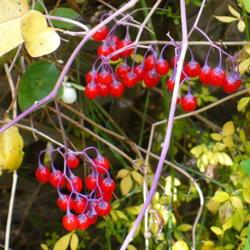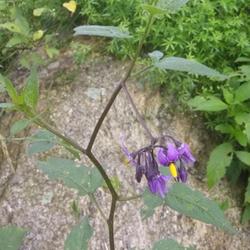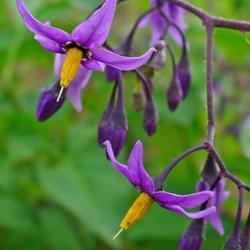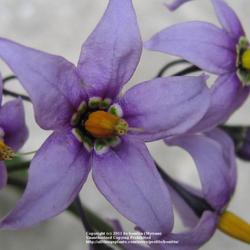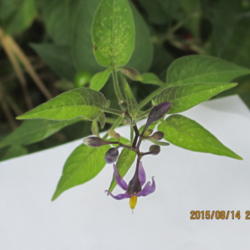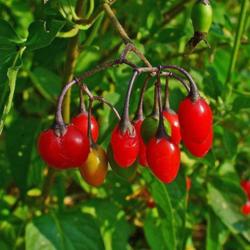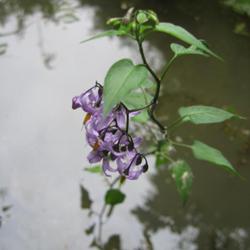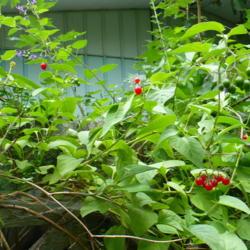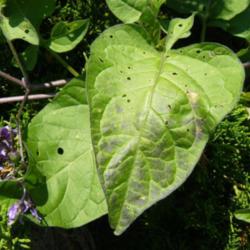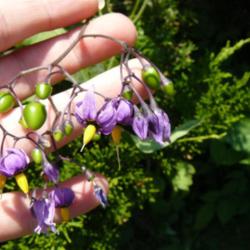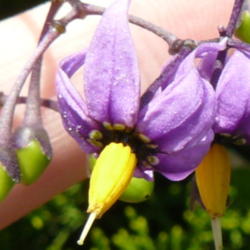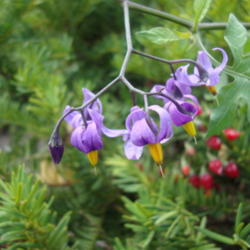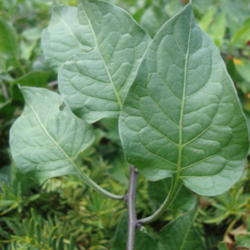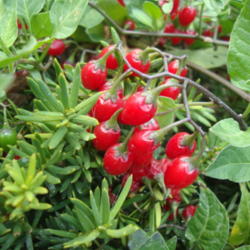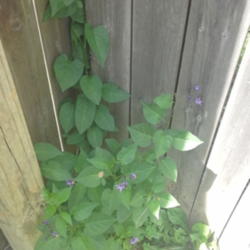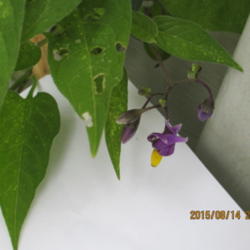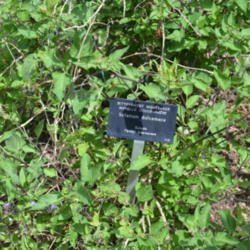| Plant Habit: | Shrub Vine |
| Life cycle: | Perennial |
| Sun Requirements: | Full Sun Full Sun to Partial Shade Partial or Dappled Shade Partial Shade to Full Shade Full Shade |
| Water Preferences: | Wet Wet Mesic Mesic |
| Minimum cold hardiness: | Zone 4a -34.4 °C (-30 °F) to -31.7 °C (-25 °F) |
| Plant Height: | 8 feet (2.5metres) |
| Plant Spread: | 8 feet (2.5 metres) |
| Leaves: | Deciduous Malodorous Broadleaf Other: stink when bruised / alternate / oval with pointed tip |
| Fruit: | Showy Edible to birds Indehiscent Other: poisonous / bright red berry clusters |
| Fruiting Time: | Summer Late summer or early fall Fall |
| Flowers: | Showy |
| Flower Color: | Purple Yellow Bi-Color |
| Bloom Size: | Under 1" |
| Flower Time: | Late spring or early summer Summer Late summer or early fall |
| Underground structures: | Rhizome |
| Uses: | Groundcover Medicinal Herb Will Naturalize |
| Resistances: | Pollution Flood Resistant Tolerates dry shade Humidity tolerant |
| Toxicity: | Leaves are poisonous Roots are poisonous Fruit is poisonous |
| Propagation: Other methods: | Layering Division |
| Pollinators: | Various insects |
| Miscellaneous: | Tolerates poor soil Goes Dormant |
| Conservation status: | Least Concern (LC) |

